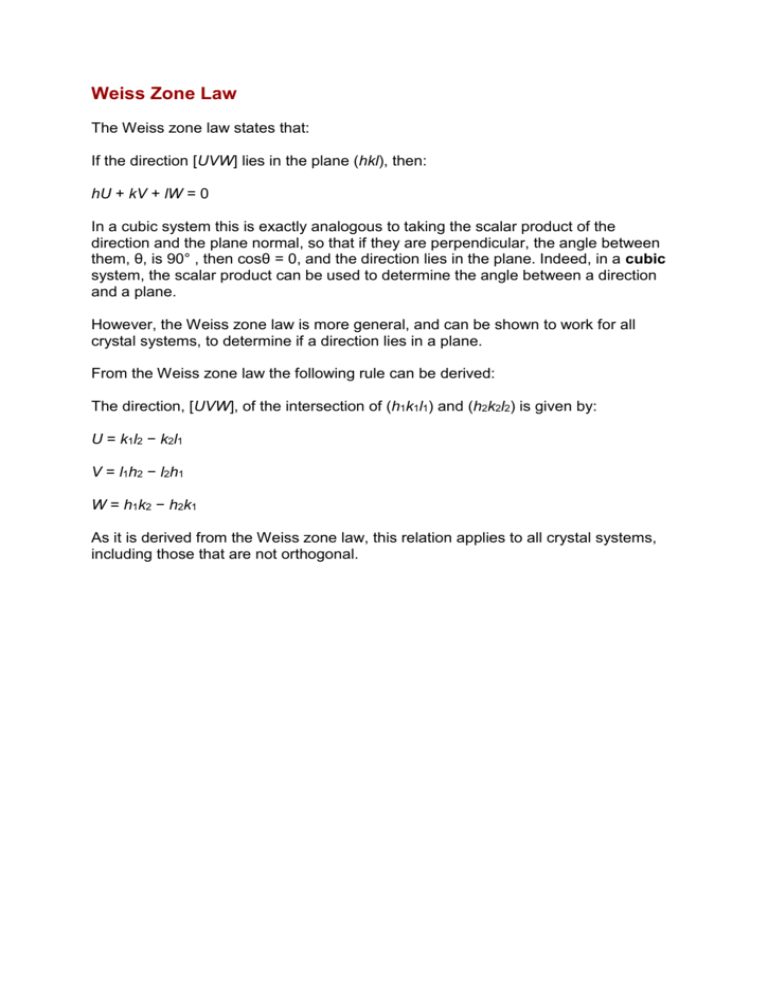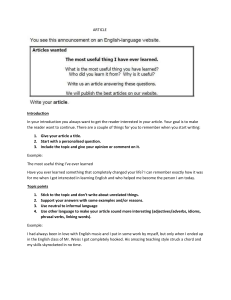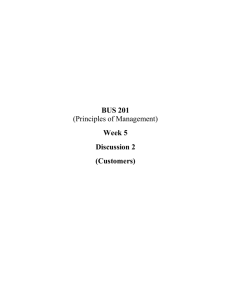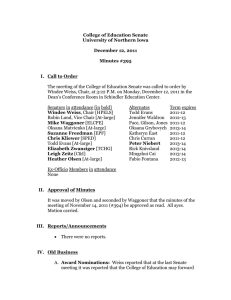Weiss Zone Law Explained: Crystallography Principles
advertisement

Weiss Zone Law The Weiss zone law states that: If the direction [UVW] lies in the plane (hkl), then: hU + kV + lW = 0 In a cubic system this is exactly analogous to taking the scalar product of the direction and the plane normal, so that if they are perpendicular, the angle between them, θ, is 90° , then cosθ = 0, and the direction lies in the plane. Indeed, in a cubic system, the scalar product can be used to determine the angle between a direction and a plane. However, the Weiss zone law is more general, and can be shown to work for all crystal systems, to determine if a direction lies in a plane. From the Weiss zone law the following rule can be derived: The direction, [UVW], of the intersection of (h1k1l1) and (h2k2l2) is given by: U = k1l2 − k2l1 V = l1h2 − l2h1 W = h1k2 − h2k1 As it is derived from the Weiss zone law, this relation applies to all crystal systems, including those that are not orthogonal.











